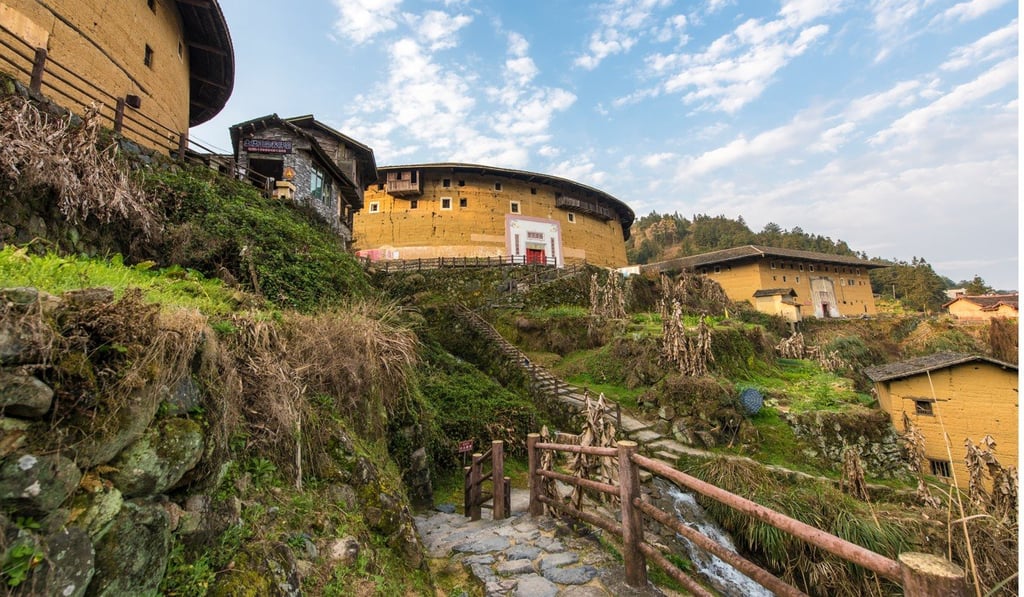Inside Fujian’s Unesco-listed Hakka roundhouses: their history, architecture and why heritage status is mixed blessing
The earthen buildings in southwest China, called tulou, have become a big tourist draw since many were included in a UN World Heritage Site in 2008. What to expect when you pay a visit and why their new status it is not all good news for villagers

As dusk envelops the village of Xiazai in Yongding district, Fujian province, in southwest China, swallows swoop low over a stream and calm descends as the tourists drift away. The old residents, all members of the Lin clan, while away the evening talking as bats dart between the rafters of the tulou earthen buildings. They reminisce about the old times, lamenting that the village’s youth have all left for the cities.
There are around 3,000 tulou, literally meaning earthen house, spread around the southwestern part of Fujian and the adjoining areas of Guangdong and Jiangxi. While round ones are the most common, there are also square ones and mansion-style (“five phoenix”) buildings.
The perfect Hong Kong weekend break: tranquil Dapeng, Shenzhen - history, hikes, and some of China’s most beautiful beaches
The tulou in Yongding were built by Hakka people who migrated south from the 11th century onwards to escape invasions of Jurchens and later Mongols in the northern area of China. Marginalised to the mountainous regions, they risked attacks by bandits and wild animals.

Communal packed-earth buildings in China date back 6,000 years, but tulou took the style to a whole new level both in scale and sophistication. In 2008, Unesco recognised their importance and gave 46 buildings a World Heritage listing. Three clusters of tulou – Hongkeng, Gaobei and Chuxi – in Yongding district, near the border with Guangdong, account for 21 of them. However, the Lin elders tell me the listing has done little to help them, and tulou in various states of disrepair dot the countryside.
In Xiazai, chickens scrabble in the cracks of one tulou’s uneven courtyard much as they have done for hundreds of years. Around the outside of the building, archaeologists dig with much more vigour in the hope of unearthing something far more exciting than seeds or grubs.